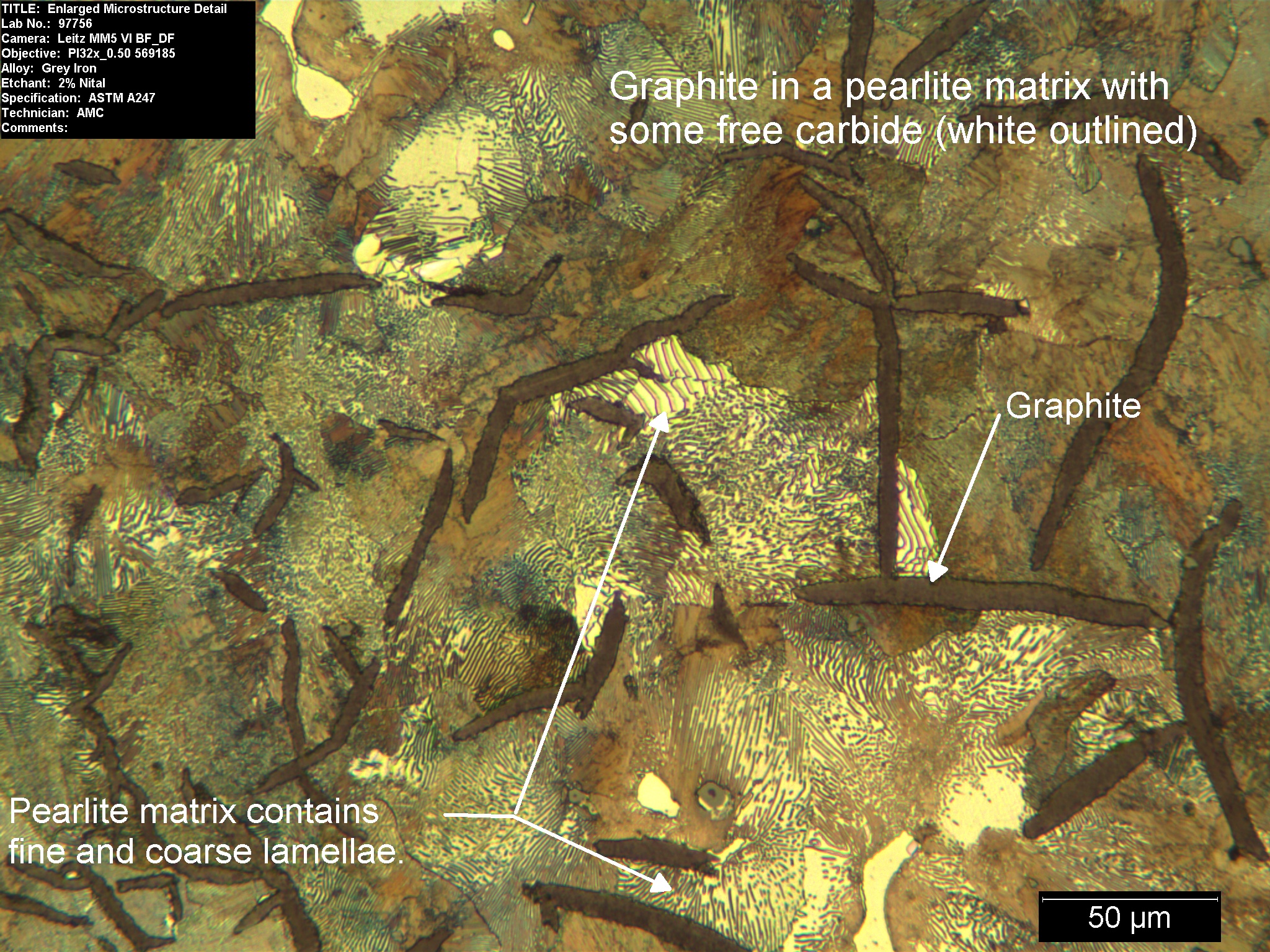|
|
| M A T E R I A L S C I E N C E & E N G I N E E R I N G |
|||||||
|
|
|
Microstructure Microstructure are material structures seen at the micro level. Specifically, they are structures of an object, organism, or material as revealed by a microscope at magnifications greater than 25 times. When typically mentioned, the microstructure are defects, impurities, grains, and grain boundary. Simply put, anything that is not regular from a given crystalline structure is a microstructure. Useful definitions below:
Carburized 1215 Steel - increased hardness (note size of indents) due to additional carbon disfusion into metal.
Gray Cast Iron - typical microstructure of gray iron is a matrix of pearlite with graphite flakes dispersed throughout.
6-4 Titanium - oxygen enriched surface due to heat treatment process. See if you can find defects, impurities, grains, and grain boundaries in this microstructure. You can tell a lot about a material from it's microstructure. |
||||
| Copyright © 2006 CES Information Guide - Materials Science Engineering |
|||||||


